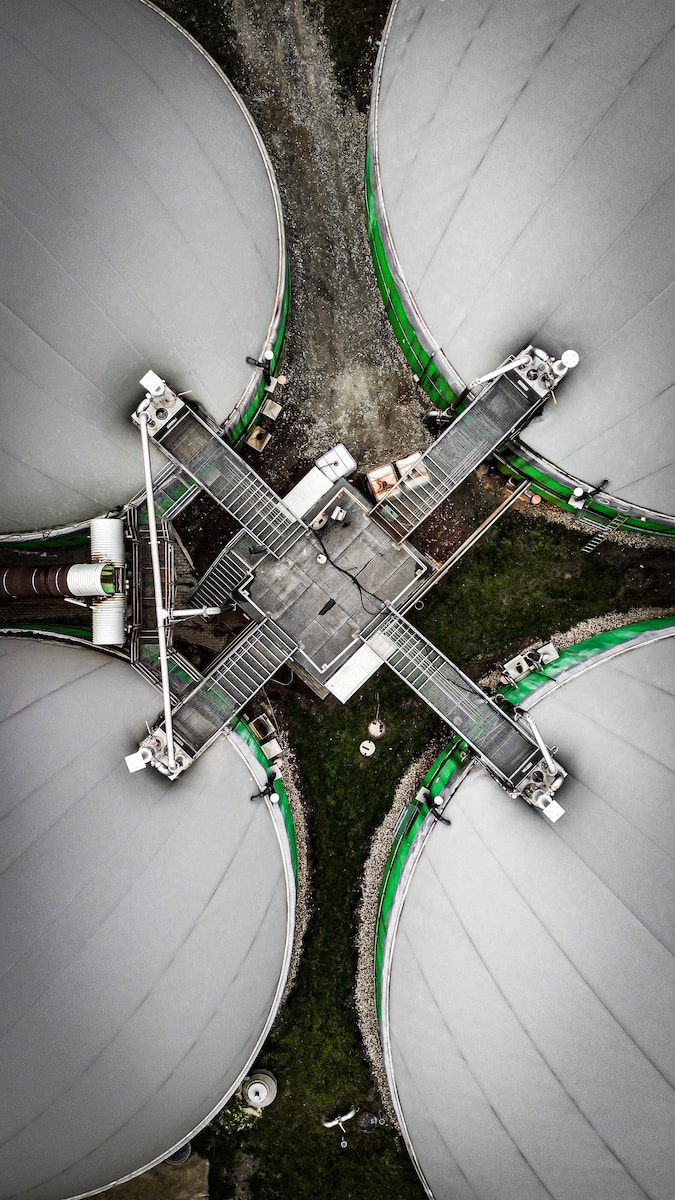To shield concrete anaerobic biogas digester tanks from acidic biogas attack, high-performance geomembranes provide an impermeable shield. Read on for an overview of digester membrane options and installation best practices.
Mitigating Hydrogen Sulfide Damage
Biogas produced during digestion contains extremely aggressive hydrogen sulfide that corrodes and deteriorates unprotected concrete over time through chemical interactions.
Evaluating Exposure Levels
Consider H2S concentrations, humidity, duty cycle, and maintenance schedule when selecting digester tank membranes. Harsher conditions require more durable materials.
Specialized Materials for Biogas Resistance
Reinforced composites containing polymers like PVC, polypropylene, polyethylene and polyurethane provide chemical resistance tailored to biogas contents.
Seeking Proven Performance
Look for thicknesses from 30 to over 100 mils and materials tested against NSF/ANSI Standard 61 for potable water contact and ASTM standards for tensile strength.
Tank Preparation and Surface Profile
Proper cleaning, scarifying, smoothing, filling divots and priming enhances geomembrane adhesion and conformity to complex digester shapes like dome roofs.
importance of Seams and Joints
Reinforced, bonded seams with perimeter anchors provide seam strength matching the membrane itself. This eliminates any weak points vulnerable to permeation.
Installation Best Practices
Avoiding wrinkles and bubbles while maintaining proper overlaps optimizes chemical protection. Worker expertise prevents punctures or other defects.
Inspection and Testing
Post-installation electrical tests like spark testing reliably identify any perforations or thin spots needing repair before putting the digester into service.
Ongoing Monitoring and Maintenance
Schedule regular inspections and early repair intervention to maximize service life. Monitoring for vapor penetration identifies membrane issues.
Value to Cost Analysis
Weigh upfront material and professional installation costs against value of decades of avoided concrete deterioration and replacement from unabated H2S damage.
For critical wastewater assets, digester geomembranes represent a cost-effective insurance policy against biogenic acid attack. Partner with an experienced applicator for proven membrane products and quality installation that stand the test of time in harsh biogas environments.
Digester Geomembrane Selection Factors
When choosing a protective geomembrane, consider:
– Polymer material performance against specific biogas chemistry
– Temperature, humidity and H2S concentration levels
– Required chemical resistance and puncture strength
– Membrane thickness durability for service life span
– Fabric reinforcement for added dimensional stability
– Flexibility for installation on complex digester domes
– Proven chemistry resistance to landfill biogas
– Manufacturing quality standards and testing
– Seaming methods for bonded, reinforced joints
– Installer expertise and construction practices
– Monitoring and maintenance after installation
With the right membrane matched to the application, wastewater asset owners gain cost-effective long-term protection against biogas degradation.



0 Comments